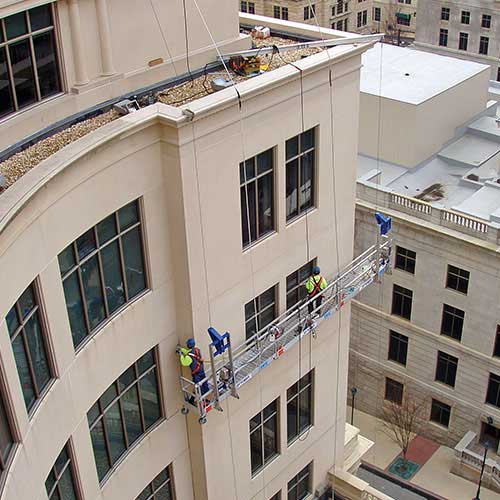Description
Jacketing is a method of structural retrofitting and strengthening It is used to increase bearing load capacity following a modification of the structural design or to restore structural design integrity due to a failure in the structural member. This technique is used on vertical surfaces such as walls, columns and other combinations such as beam sides and bottoms. It consists of added concrete with longitudinal and transverse reinforcement around the existing column. Jacketing is the process whereby a section of an existing structural member is restored to original dimensions or increased in size by encasement using suitable materials. A steel reinforcement cage or composite material wrap can be constructed around the damaged section onto which shotcrete or cast-in-place concrete is placed.
Jacketing is particularly used for the repair of deteriorated columns, piers, and piles and may easily be employed in underwater applications. The method is applicable for protecting concrete, steel, and timber sections against further deterioration and for strengthening. Jacketing improves axial and shear strength of columns and a major strengthening of the foundation may be avoided.
Jacketing is the process of strengthening weak RCC columns that have deteriorated over time due to adverse atmospheric conditions or due to poor maintenance of the structure. Other reasons during the construction phase include design errors, deficient concrete production, bad execution process. During the service life, the need may arise due to an earthquake; an accident, such as collisions, fire, or explosions; situations involving changes in the structure functionality; the development of more demanding code requirements.
- The load carried by the column is increased.
- When there is an error in design.
- Deterioration of column due to weathering action.
- Dilapidation of columns.
- Heavy damage due to other causes like earthquakes and fire
Advantages of jacketing
- It increases the seismic capacity of columns.
- The amount of work is less as foundation strengthening is not required.
- It increases the shear strength of the column.
- It also increases the confinement of concrete in circular columns.
- Does not increase the significant weight of the column and also saves construction time (curing).
Concrete Jacketing is pivotal for strengthening to add or restore the ultimate load capacity of reinforced concrete columns. It is used for seismic retrofitting, supporting additional live load or dead load that is not included in the original design, relieving stresses generated by design or construction errors, or restoring original load capacity to damaged structural elements.

